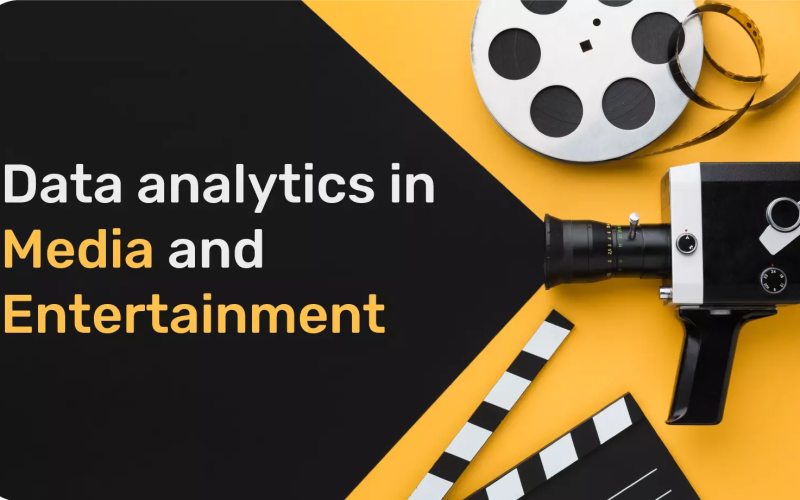Introduction
In the rapidly evolving landscape of the entertainment industry, data analytics has emerged as a pivotal force. From streaming services to film production, data-driven decision-making is transforming how content is created, distributed, and consumed. This article delves into the multifaceted role of data analytics in shaping entertainment content, exploring its impact on various sectors within the industry.
The Evolution of Data Analytics in Entertainment

-
Early Beginnings
The integration of data analytics in entertainment is not an entirely new phenomenon. Historically, studios and production houses have relied on box office figures, Nielsen ratings, and other rudimentary forms of data to gauge audience preferences and success metrics. However, the advent of digital technology and the proliferation of online platforms have exponentially expanded the scope and granularity of data available.
-
The Digital Revolution
The digital revolution has ushered in an era where vast amounts of data are generated every second. Streaming platforms, social media, and online forums provide a treasure trove of information about viewer habits, preferences, and interactions. This deluge of data has necessitated the development of sophisticated analytical tools and techniques to harness its potential effectively.
Data Analytics in Content Creation

-
Audience Insights
One of the most significant contributions of data analytics to entertainment content is the ability to glean deep insights into audience behavior. By analyzing viewing patterns, demographic information, and engagement metrics, content creators can tailor their offerings to meet the specific tastes and preferences of their target audience.
Case Study: Netflix
Netflix is a prime example of a company that has leveraged data analytics to revolutionize content creation. The streaming giant uses a combination of machine learning algorithms and big data analytics to analyze user behavior and predict viewing preferences. This data-driven approach has led to the creation of highly successful original content, such as “Stranger Things” and “The Crown,” which are meticulously crafted to resonate with specific audience segments.
-
Predictive Analytics
Predictive analytics is another powerful tool in the arsenal of content creators. By analyzing historical data and identifying patterns, predictive models can forecast the potential success of a project before it even goes into production. This enables studios to make informed decisions about which projects to greenlight, thereby minimizing financial risk.
Example: Script Analysis
Several companies are now using predictive analytics to evaluate scripts. By analyzing elements such as plot structure, character development, and dialogue, these tools can predict a script’s potential success with a high degree of accuracy. This data-driven approach allows studios to invest in projects with the highest likelihood of success.
Data Analytics in Content Distribution

-
Personalized Recommendations
One of the most visible applications of data analytics in entertainment is the personalized recommendation engine. Streaming platforms like Netflix, Amazon Prime, and Hulu use sophisticated algorithms to analyze user behavior and suggest content that aligns with their preferences. This not only enhances user experience but also increases viewer engagement and retention.
-
The Science Behind Recommendations
Recommendation engines typically use a combination of collaborative filtering, content-based filtering, and hybrid methods to generate personalized suggestions. Collaborative filtering analyzes patterns and similarities between users, while content-based filtering focuses on the attributes of the content itself. Hybrid methods combine both approaches to deliver more accurate recommendations.
-
Marketing and Promotion
Data analytics also plays a crucial role in the marketing and promotion of entertainment content. By analyzing social media trends, search engine queries, and online discussions, marketers can identify the most effective channels and strategies to reach their target audience. This data-driven approach ensures that promotional efforts are both efficient and impactful.
Example: Social Media Analytics
Social media platforms provide a wealth of data that can be used to gauge audience sentiment and engagement. By analyzing metrics such as likes, shares, comments, and hashtags, marketers can identify trending topics and tailor their campaigns accordingly. This real-time feedback loop allows for dynamic and responsive marketing strategies.
Data Analytics in Audience Engagement

-
Real-Time Analytics
Real-time analytics enable content providers to monitor audience engagement as it happens. This is particularly valuable for live events, such as sports broadcasts and reality shows, where immediate feedback can inform on-the-fly adjustments and enhancements.
Example: Sports Broadcasting
In sports broadcasting, real-time analytics can be used to enhance the viewer experience by providing instant replays, player statistics, and interactive features. This not only enriches the viewing experience but also keeps audiences engaged and invested in the content.
-
Sentiment Analysis
Sentiment analysis is a technique used to gauge public opinion by analyzing text data from social media, reviews, and other online sources. By understanding the emotional tone of audience reactions, content creators can make informed decisions about future projects and marketing strategies.
Example: Film Reviews
Film studios often use sentiment analysis to assess the reception of new releases. By analyzing reviews and social media posts, they can identify common themes and sentiments, allowing them to address any issues and capitalize on positive feedback.
-
Ethical Considerations
While the benefits of data analytics in entertainment are undeniable, it is essential to consider the ethical implications. Issues such as data privacy, algorithmic bias, and the potential for manipulation must be addressed to ensure that data-driven practices are both ethical and transparent.
-
Data Privacy
The collection and analysis of vast amounts of personal data raise significant privacy concerns. It is crucial for companies to implement robust data protection measures and ensure that user data is collected and used in compliance with relevant regulations.
-
Algorithmic Bias
Algorithms are only as good as the data they are trained on. If the underlying data is biased, the resulting predictions and recommendations can perpetuate and even exacerbate existing inequalities. It is essential to regularly audit and refine algorithms to mitigate bias and ensure fairness.
Conclusion
Data analytics has undeniably transformed the entertainment industry, offering unprecedented insights and capabilities. From content creation and distribution to audience engagement and marketing, data-driven decision-making is reshaping how entertainment content is produced and consumed. As the industry continues to evolve, the role of data analytics will only become more integral, driving innovation and enhancing the overall entertainment experience.
By embracing the power of data analytics while addressing its ethical implications, the entertainment industry can continue to thrive in an increasingly digital and data-driven world.











